
These days, there are people making artisanal tortillas in Ireland, small-batch soy sauce in Kentucky, and Spanish-style sausage in southwestern Georgia. It might be hard to remember, then, that there was a time when certain foods were so strongly identified with their place of origin or manufacture that the names of products and locales were permanently linked. (Here’s the strangest food from every state.)
The association between food and place, however, has grown tenuous, and in most cases geographical references today indicate a style (or aspirations to a style) rather than an actual source.
Sometimes the terms are strictly fanciful or applied for other than the expected reasons anyway. English muffins don’t come from England (they were invented by an Englishman in New York City), German chocolate cake isn’t Teutonic in origin (it was named for chocolatier Samuel German), and Jerusalem artichokes have nothing to do with Israel (they’re the root of a kind of sunflower, and “Jerusalem” is a corruption of the Italian name for that plant, girasole.)
In other cases, there was once a legitimate connection — Buffalo wings were invented in the New York State city whose name they bear; Dijon mustard originally came only from the region of Dijon in Burgundy — but the food itself has become ubiquitous and its place of origin has been practically forgotten. (For wings as well as other chicken preparations, these are the 35 best fried chicken places in America.)
Click here to see fabulous foods that made places famous
Nonetheless, over time, some foodstuffs and some dishes have mutually increased each other’s renown through their association. Baked beans didn’t really make Boston famous, but it’s hard to think of one without the other; likewise Peking and duck (even if the city has long since been known as Beijing).
Here are 25 foods, most of them well-known, named after places that may or may not have been famous in their own right but whose celebrity certainly hasn’t suffered through links with something good to eat.
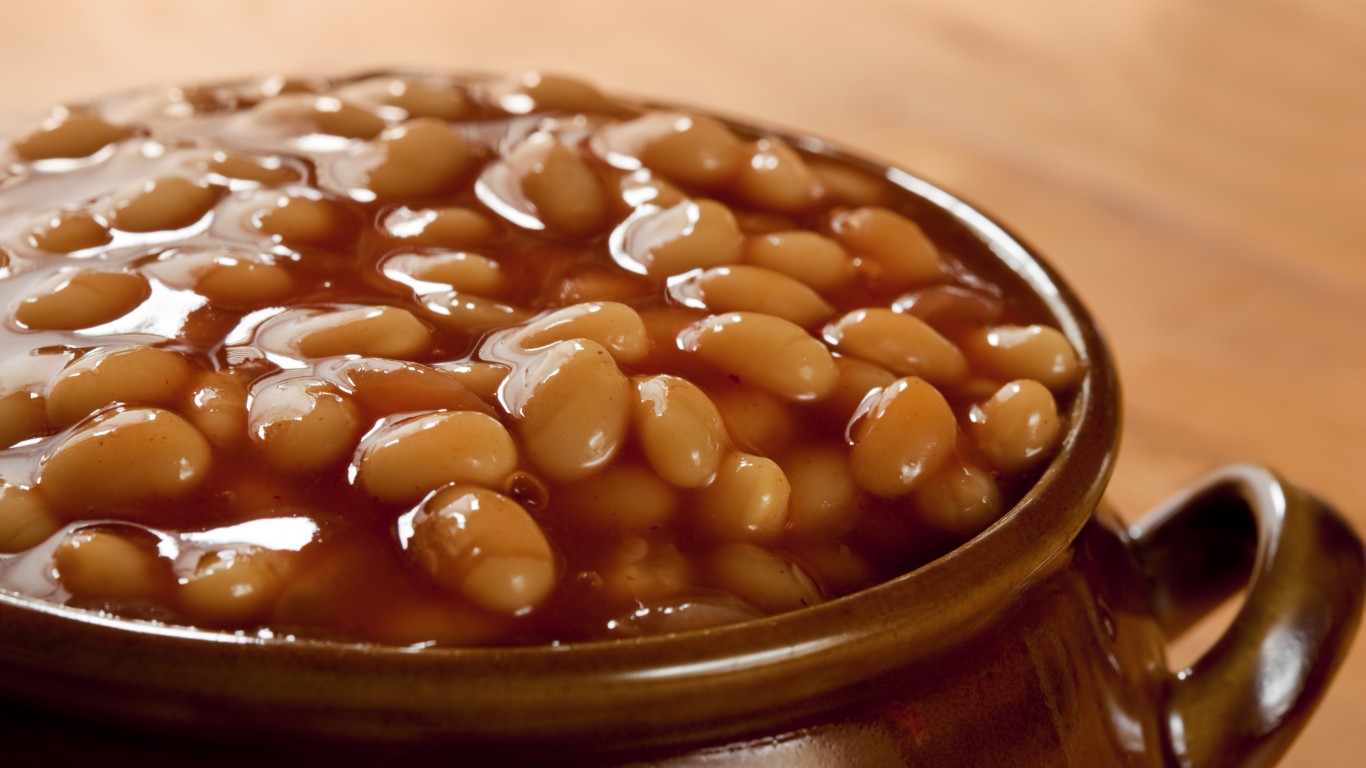
1. Boston baked beans
A dish dating from the Colonial era, these beans, flavored with molasses, were typically baked in brick ovens overnight on Saturdays for consumption on Sundays, when strict religious laws limited cooking activities.
[in-text-ad]
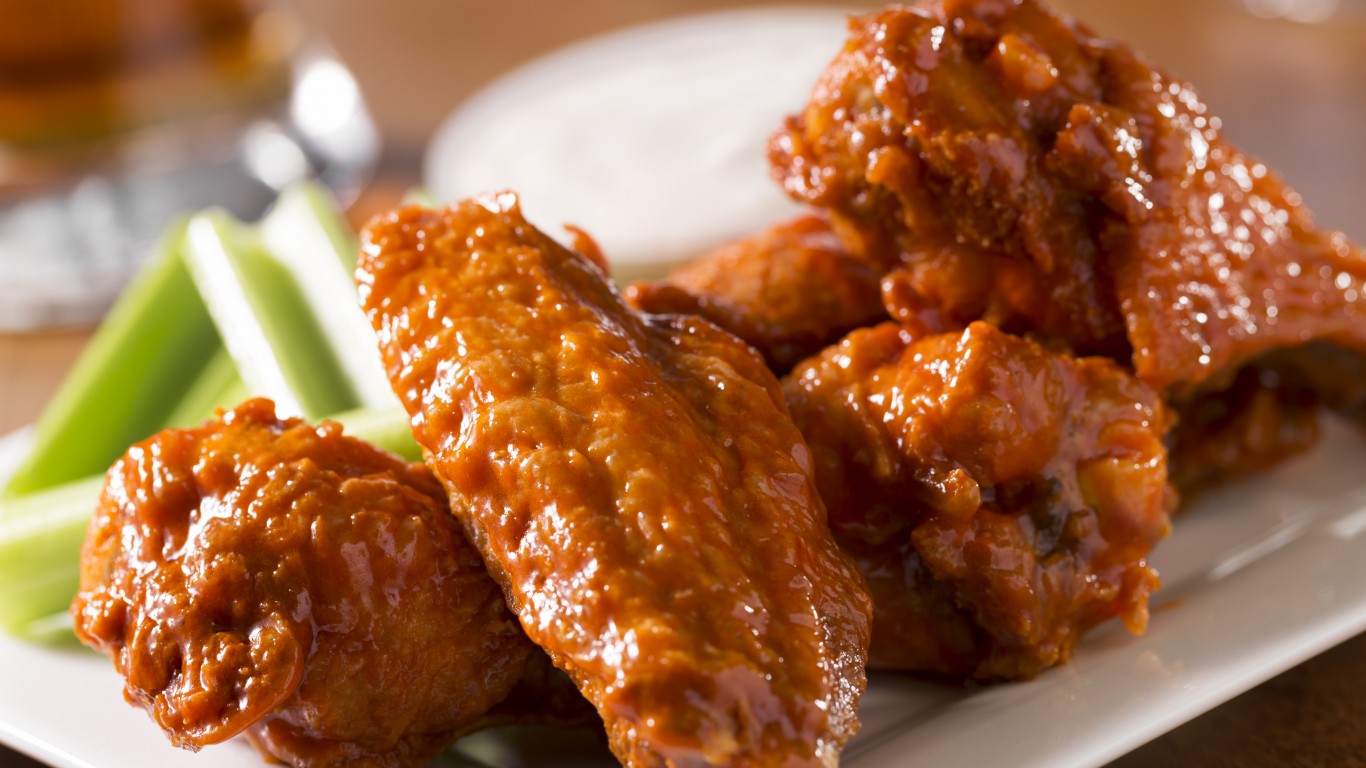
2. Buffalo wings
In its classic form, this popular appetizer, invented or at least popularized in Buffalo, New York (possibly at the city’s Anchor Bar) consists of deep-fried chicken wings glazed in hot sauce, served with celery sticks and blue cheese dressing.
3. Vienna sausage
The original Vienna sausage is basically a hot dog — “Wiener” means Viennese in German. In the U.S., the term now usually describes short lengths of smoked sausage sold in cans — often the basis for the popular hors d’oeuvre called pigs in a blanket.
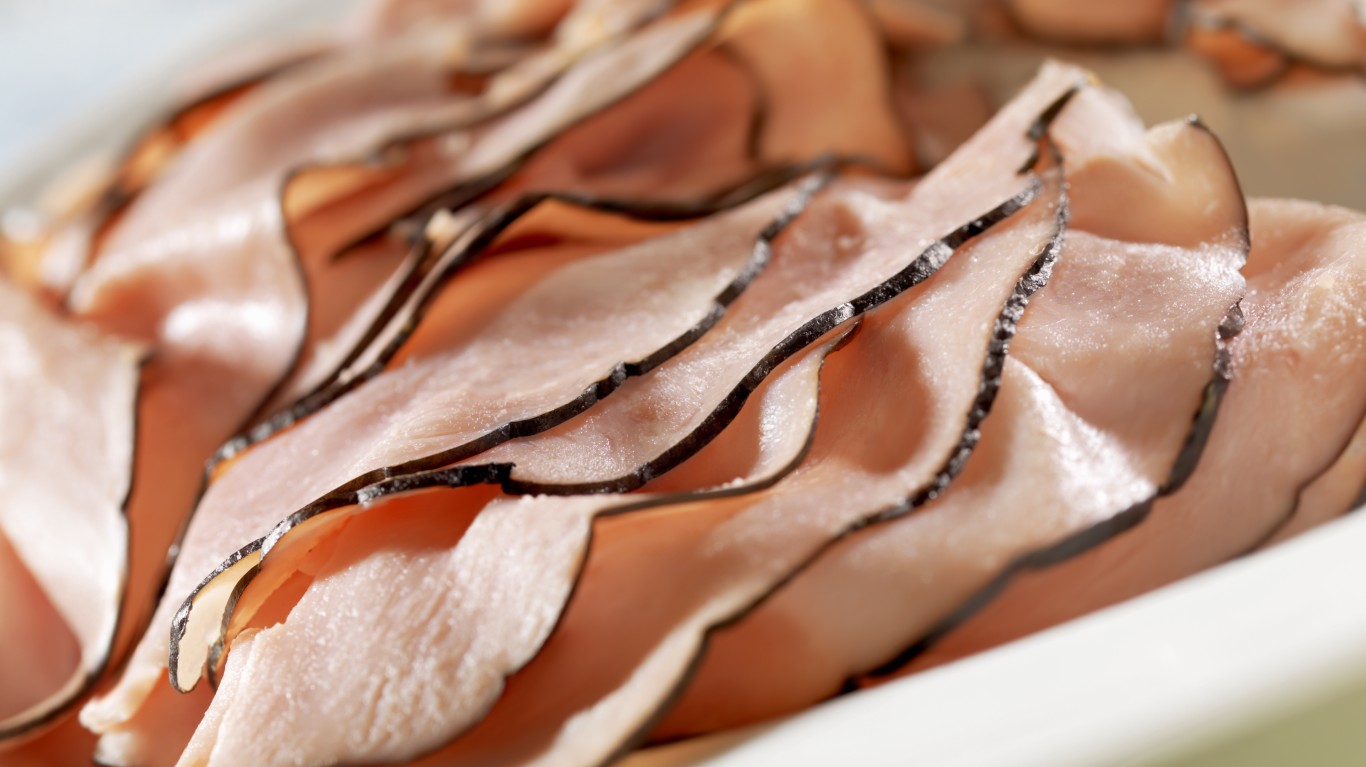
4. Black Forest ham
This dry-cured smoked ham comes from Germany’s Black Forest region, and the name is legally protected in the European Union. In the U.S., while genuine Black Forest ham might sometimes be available, there are many locally produced versions made in the style of the German original.
[in-text-ad-2]

5. Genoa salami
A popular kind of salami, made from ground pork and flavored with garlic, peppercorns, and wine, this Italian cured sausage traces its origins to the backcountry behind the bustling Ligurian seaport of Genoa.

6. Denver omelette
Nobody is quite sure how this omelette, traditionally filled with diced ham, bell peppers, and onions, got its name (it’s also known as a Western omelette). It was probably originally a sandwich of eggs, peppers, and onions, eaten by Chinese laborers on the transcontinental railroad, eventually evolving into omelette form. Legendary food writer James Beard believed that it was named for Denver because that was the largest city the railroad passed through at the time.
[in-text-ad]

7. Quiche Lorraine
In effect a kind of tart with a custardy filling full of fried bacon cubes (lardons), this quiche is named for the eastern French region of Lorraine, where it was first prepared.
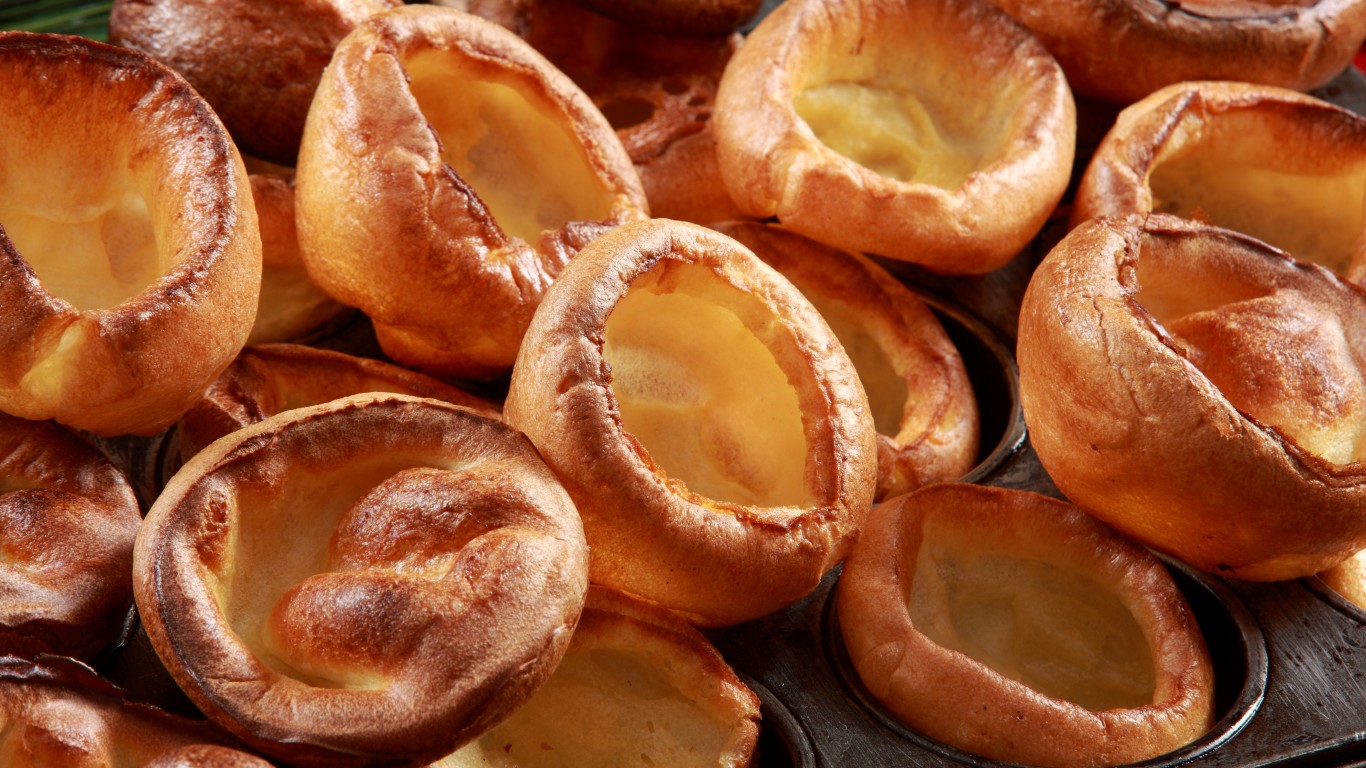
8. Yorkshire pudding
A batter pudding with a light, airy interior, similar to the popover, this English specialty was traditionally cooked in the drippings from roast beef. Though batter puddings were common around England, the name of the northern county of Yorkshire was apparently applied to this dish in the 18th century to distinguish it from heavier versions from elsewhere around the country.
9. Sriracha sauce
This now ubiquitous hot sauce, popular in Thai and Vietnamese cuisine but now also a common American condiment (much of which is made in Los Angeles), is named for the town of Si Racha (sometimes written as Sri Racha), southeast of Bangkok on the Gulf of Thailand.
[in-text-ad-2]

10. Dijon mustard
The city of Dijon in France’s Burgundy region, which was the capital of mustard-making in the Middle Ages, lends its name to this quintessential condiment. A legal ruling in 1937 established that “Dijon mustard” had become a generic term with no necessary connection to Burgundy, and it is now made in various countries around the world.
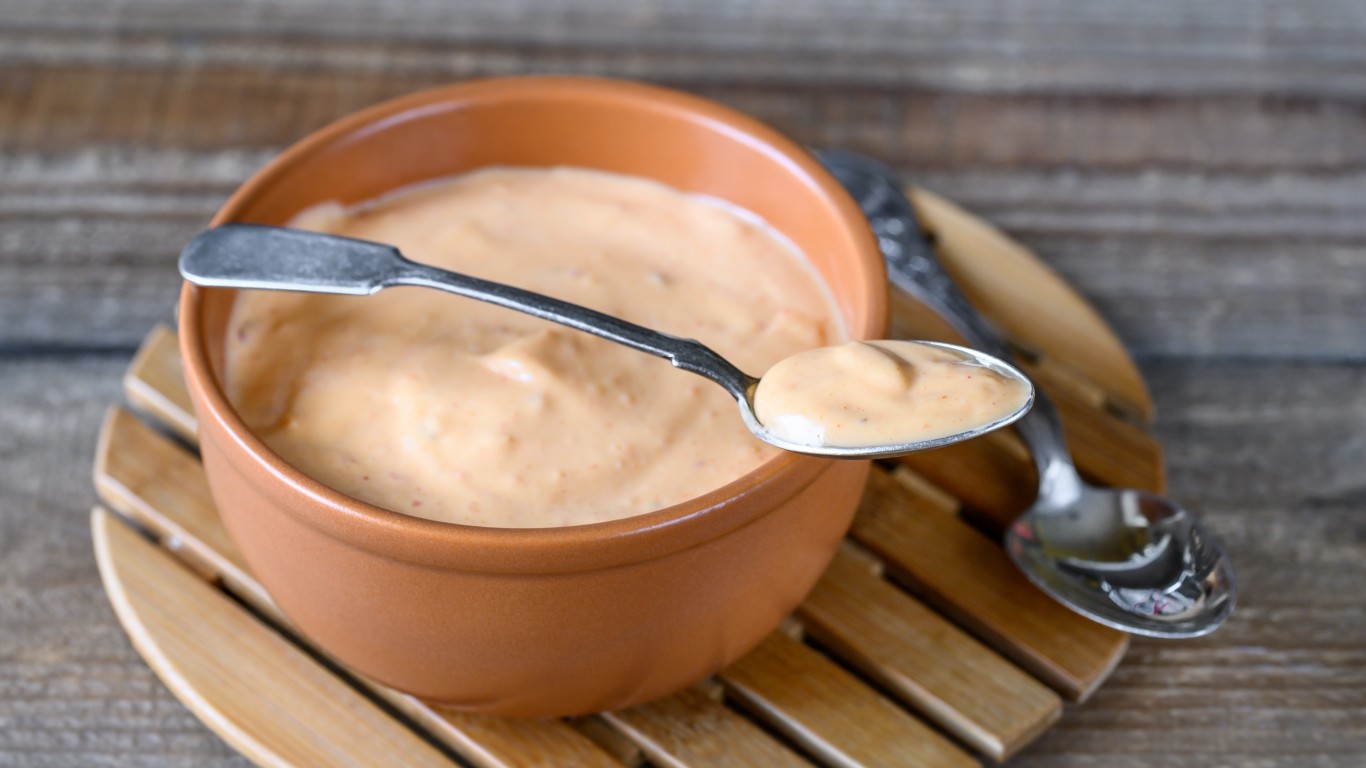
11. Thousand Island dressing
The Thousand Islands are an archipelago of more than 1,850 islands in the Saint Lawrence River, on both sides of the U.S.-Canada border. The dressing that bears the region’s name, a pink condiment with a mayonnaise base and numerous spices and finely chopped ingredients (like pickles, onions, parsley, pimento, and chives), dates from the late 19th or early 20th century. There are numerous stories of its origins.
[in-text-ad]
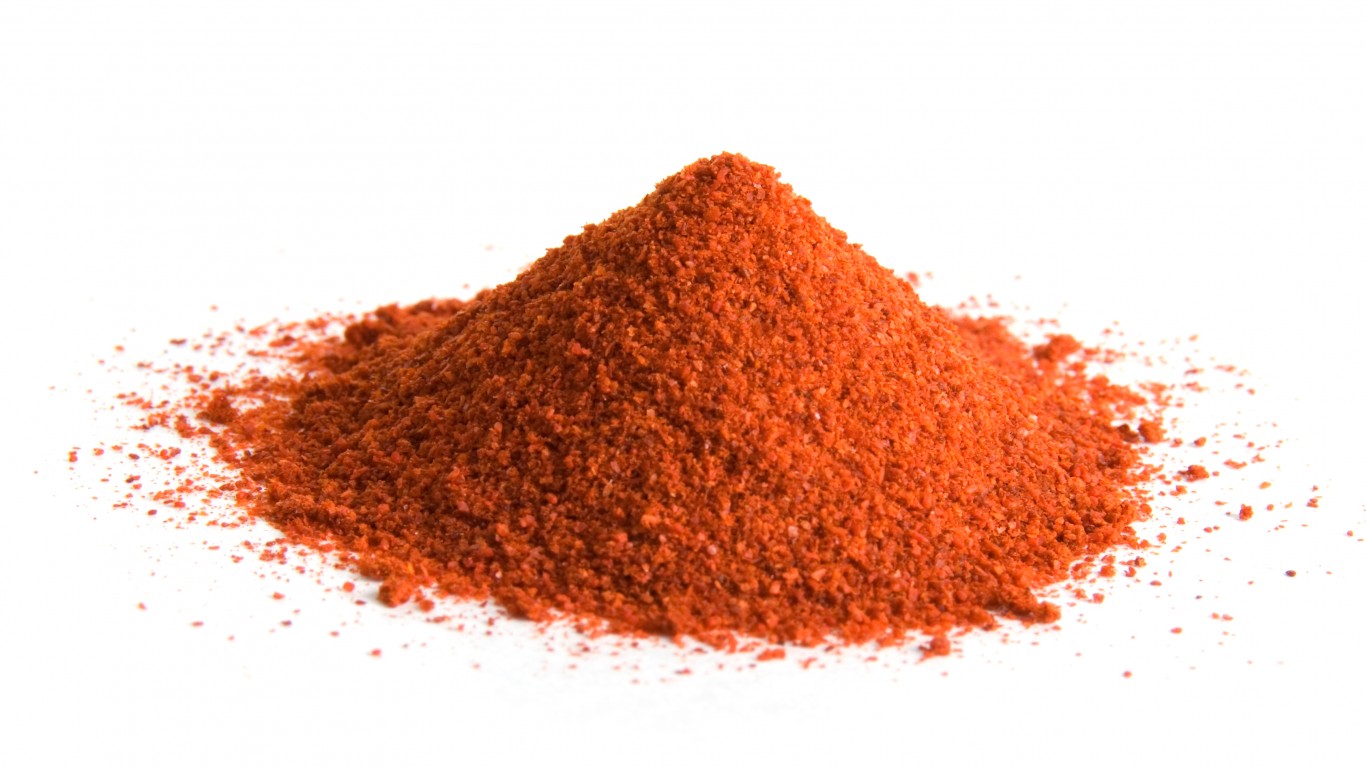
12. Cayenne pepper
Medium-hot cayenne peppers are mostly grown to be dried and ground into a spicy powder for cooking. Cayenne may take its name from an indigenous Brazilian word for pepper. It is believed that the city of Cayenne in French Guiana may have been named for the pepper and not the other way around.
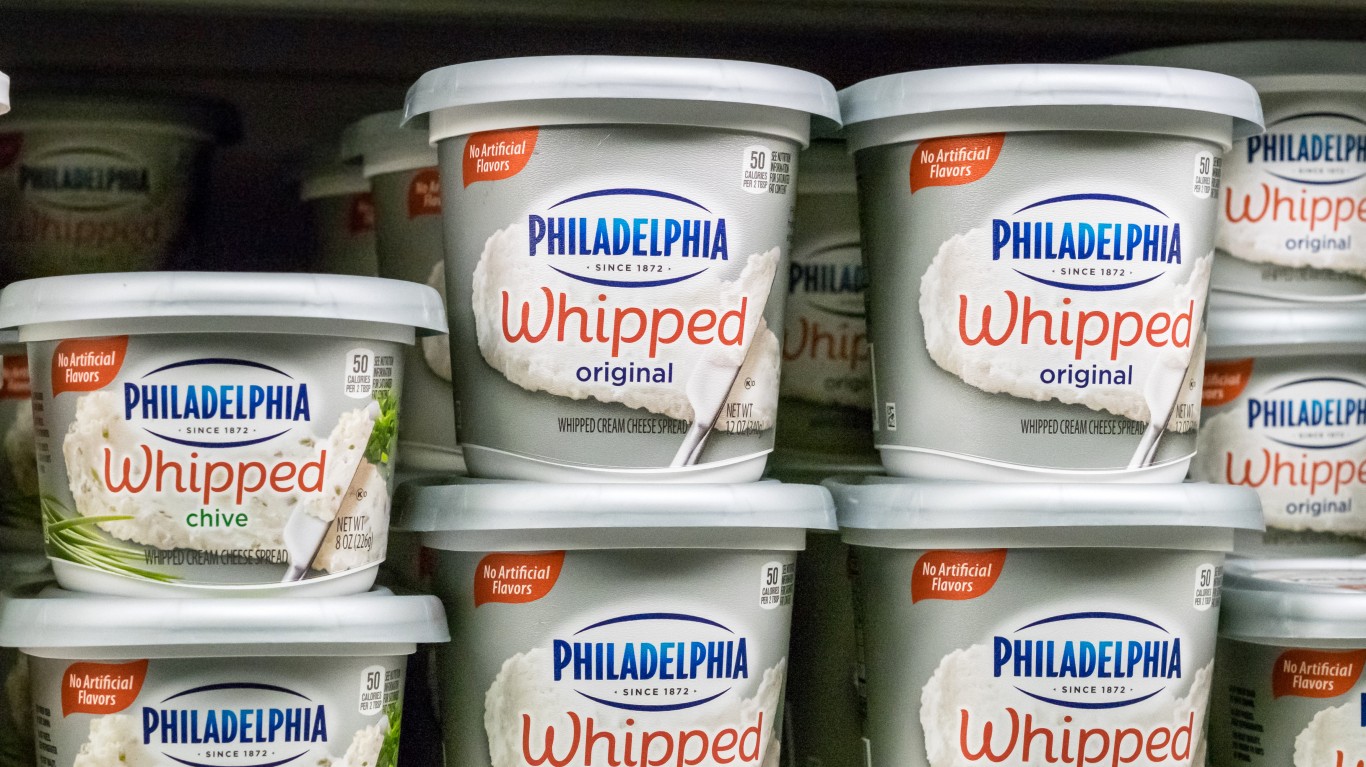
13. Philadelphia Cream Cheese
This soft, spreadable fresh cheese was invented in New York State, not Pennsylvania. It is said to have earned its name because, at the time of its creation in the latter 19th century, Philadelphia was considered to be a particularly wealthy and sophisticated city and the makers of the cream cheese thought that an association with the place would add class to their product.
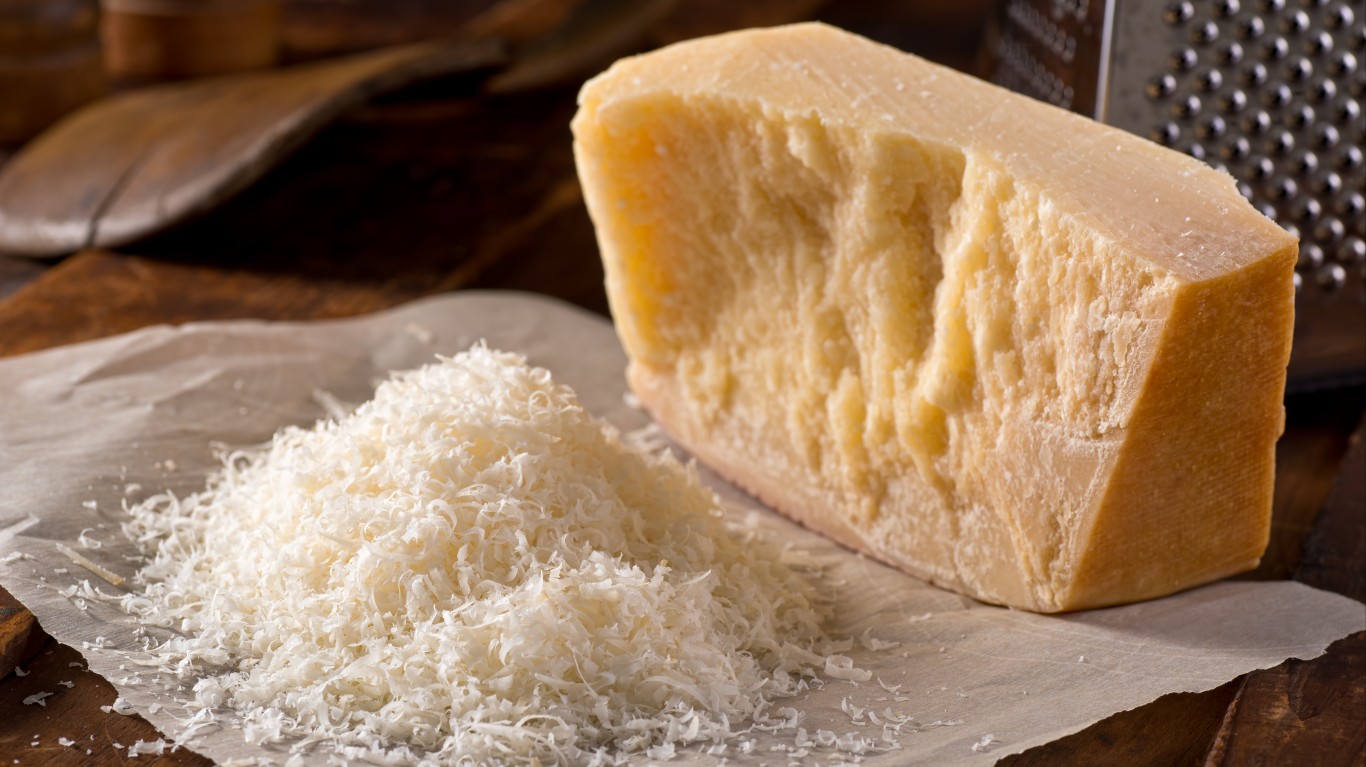
14. Parmesan cheese
Parmesan cheese is named for the city of Parma in Italy’s Emilia-Romagna region (also the home of prosciutto di Parma). The original Italian cheese is called parmigiano-reggiano. The cheese sold as simply “Parmesan” in the U.S. and elsewhere today has a textural resemblance to the Italian version, but is considered a poor substitute by food-lovers.
[in-text-ad-2]
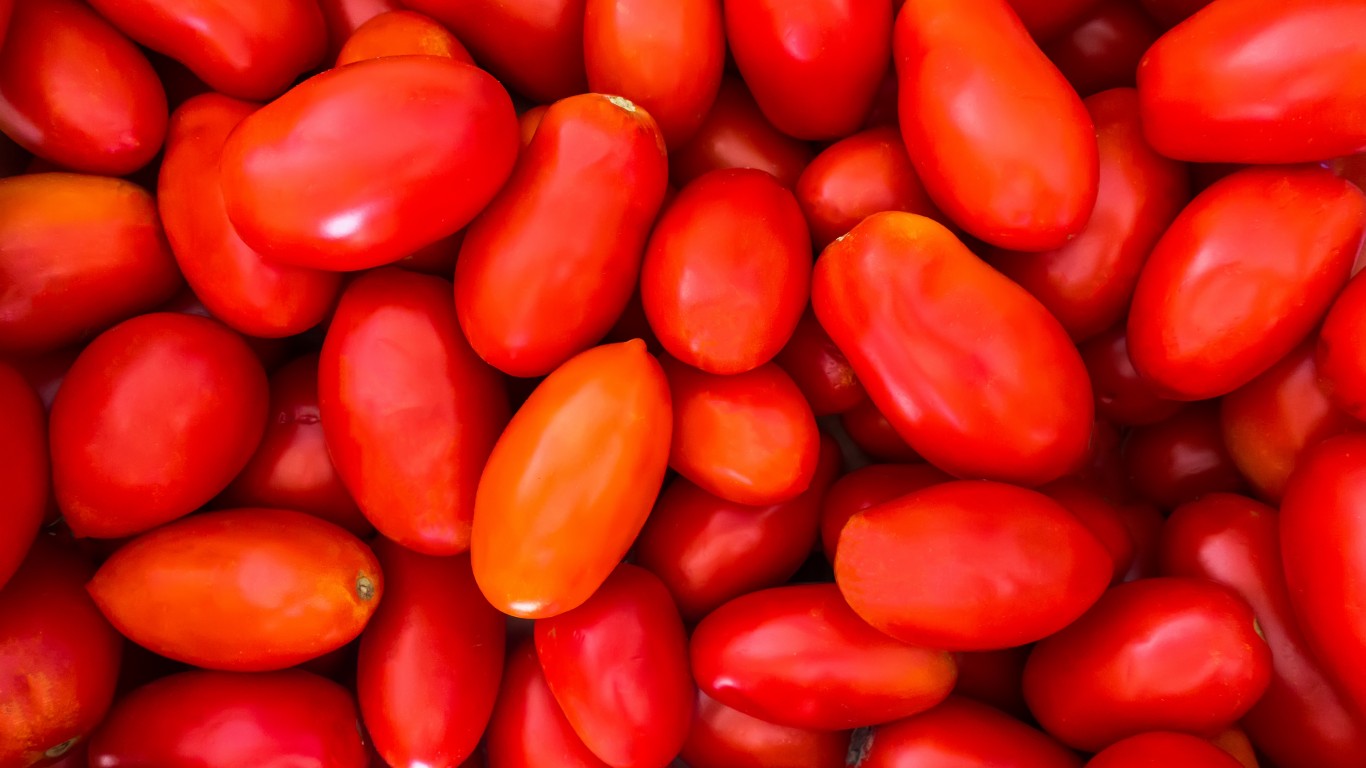
15. San Marzano tomatoes
San Marzano is the name of a variety of Italian plum tomato, and also the name of the region where it was first developed. San Marzanos are particularly well-suited to canning, and are often considered by Italian chefs and cooks around the world to be the best substitute for fresh tomatoes.
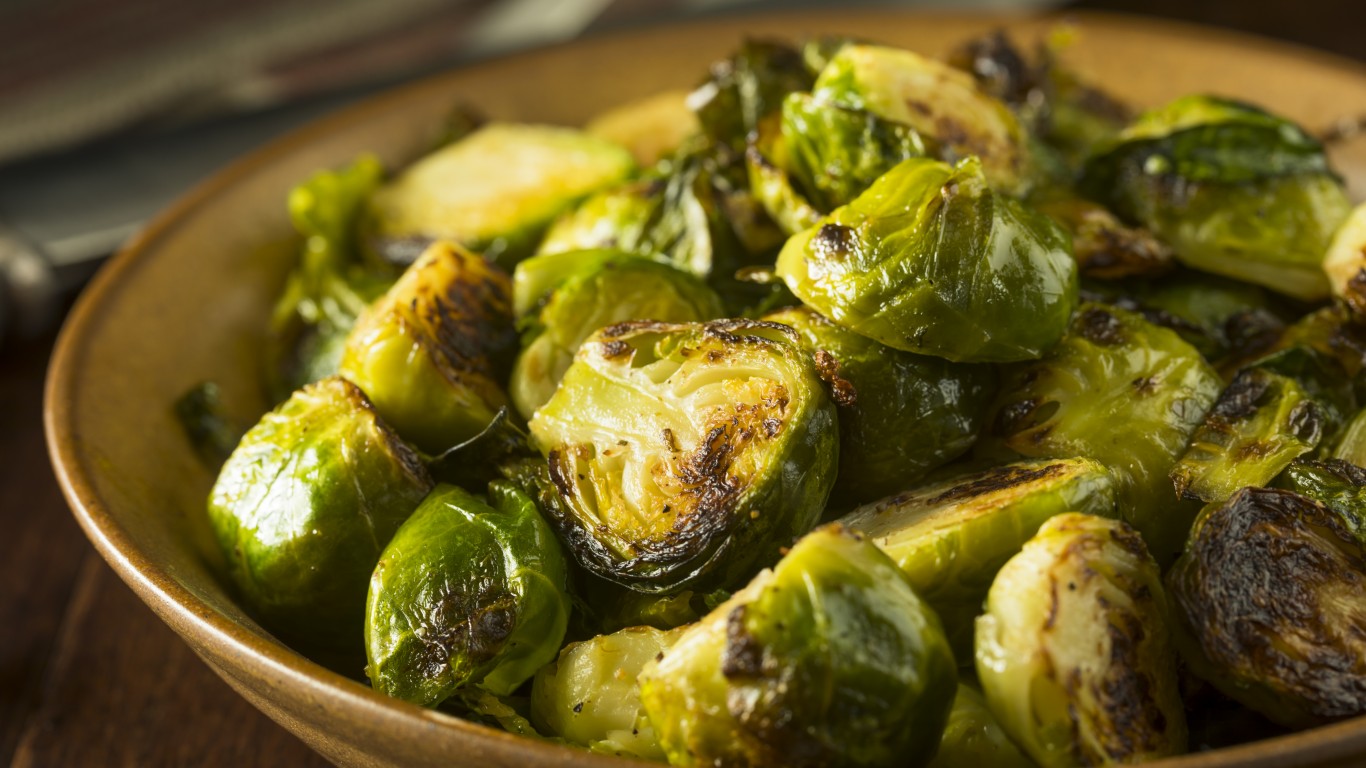
16. Brussels sprouts
A kind of miniature cabbage, Brussels sprouts may have been cultivated (under another name) in Ancient Rome, but were being grown near Brussels, Belgium, by the 13th century A.D. They have long been particularly appreciated in that city, which gave them its name.
[in-text-ad]
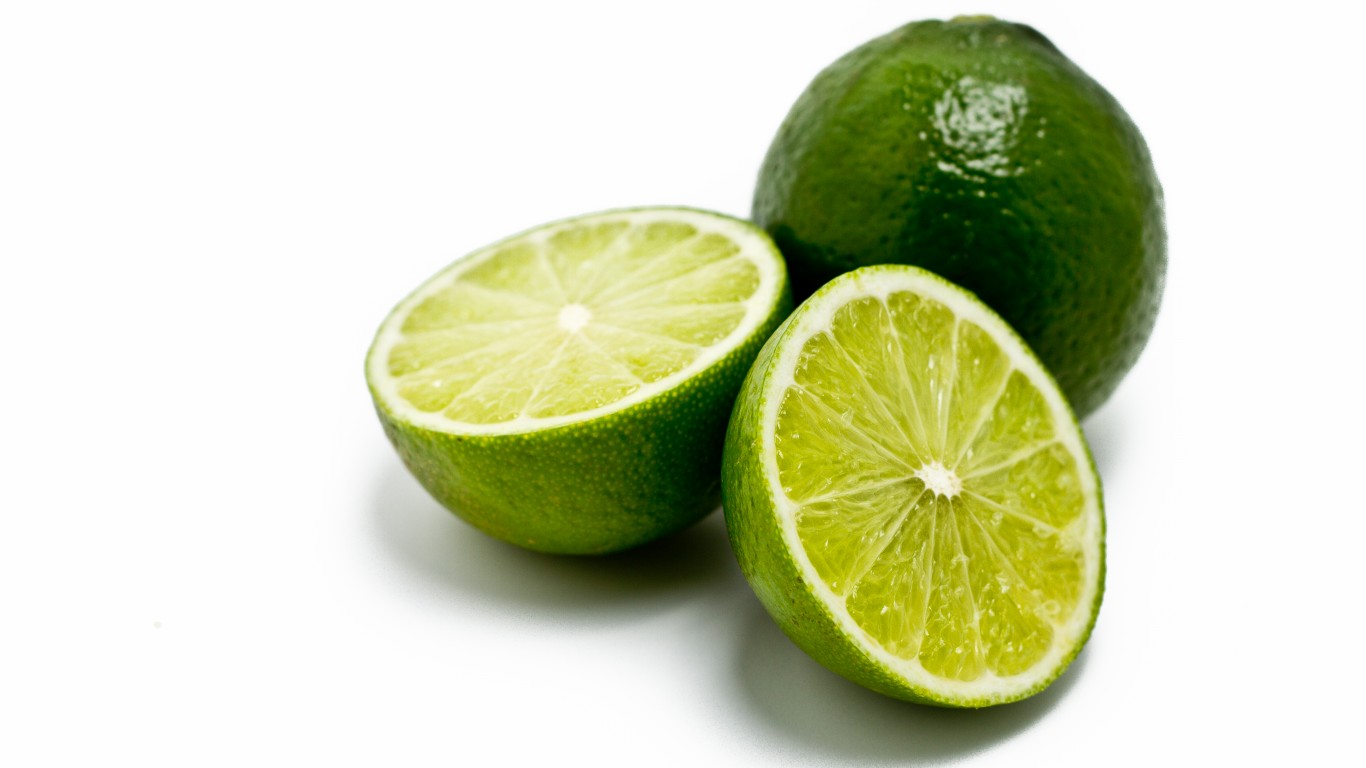
17. Key limes
The Key lime is smaller than the more common Persian lime and has seeds, which the Persian lime doesn’t. Also known as the Mexican or West Indian lime, it takes its most common name from the Florida Keys, where it was first cultivated around the early years of the 20th century.

18. Fuji apples
This popular crisp apple, yellow and red in color, was developed at the Tohoku Research Station in Fujisaki, in the far northern reaches of Honshu — Japan’s largest island. Christened for the first part of its native city’s name, it has become one of the most popular apple varieties in America.
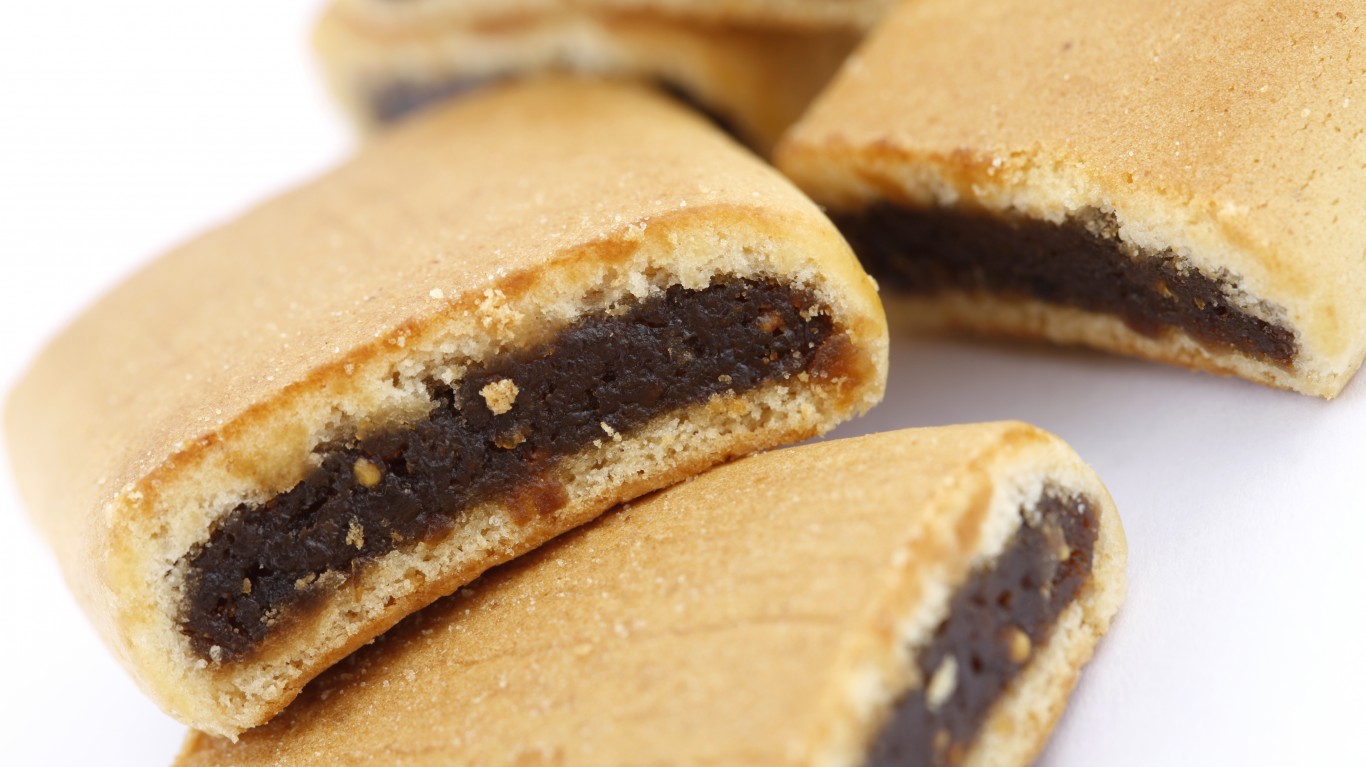
19. Fig Newton
This confection of fig paste baked in a soft crust was first baked at a facility in Cambridge, Massachusetts, but for some reason took its name from the nearby town of Newton.
[in-text-ad-2]
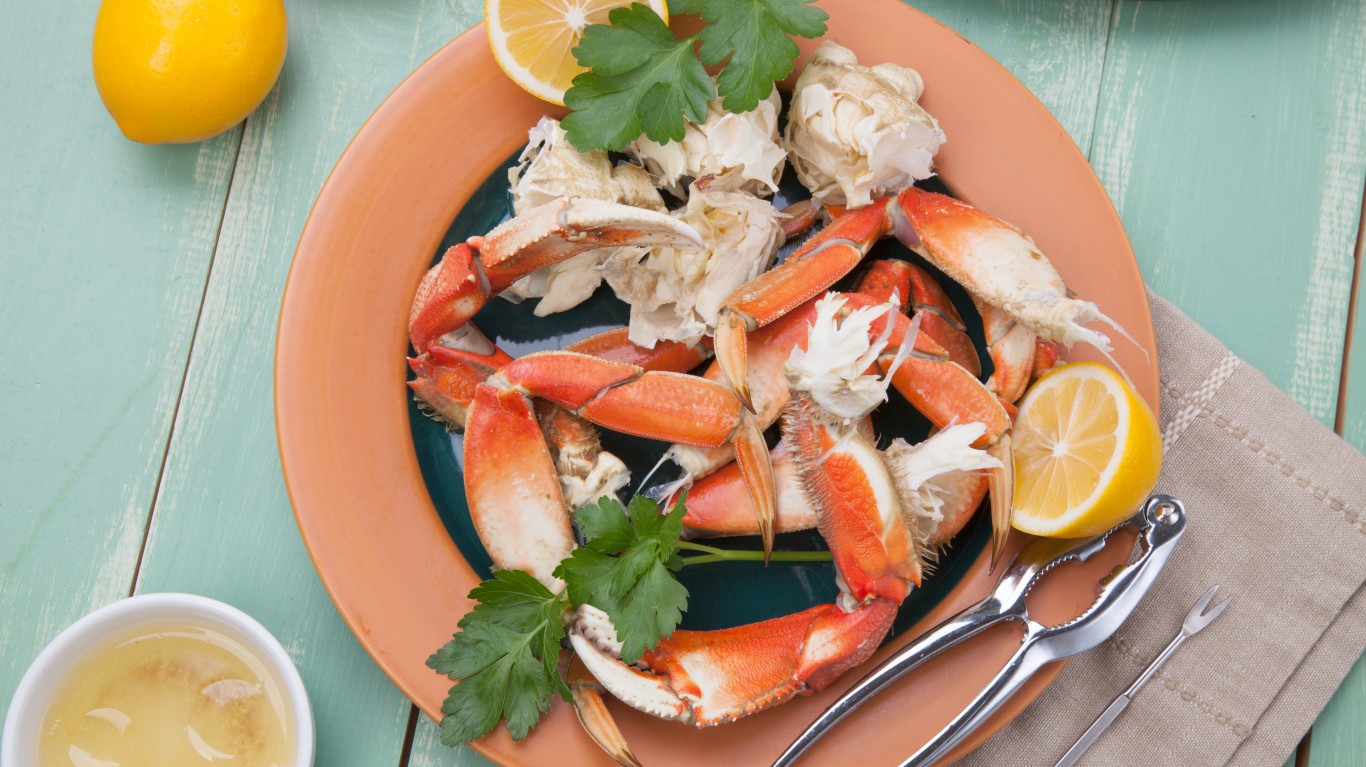
20. Dungeness crab
The port town of Dungeness, Washington, gives its name to this particularly delicious crab, but it’s found along much of the Pacific Coast.

21. Crab Rangoon
Rangoon is the old name of Yangon, the capital of Myanmar (formerly Burma), but this popular Chinese-American and tiki-bar appetizer of crab meat or imitation crab and cream cheese in a fried wonton wrapper has nothing to do with the cuisine of that region. It was likely invented by restaurateur “Trader Vic” Bergeron in San Francisco in the 1950s.
[in-text-ad]

22. Dover sole
Names for the southern English fishing port of Dover, where most of it was landed in the 19th century, this highly esteemed flatfish (Solea solea) is all over the eastern Atlantic and in the North Sea and the Mediterranean.

23. Mongolian barbecue
The East Asian country of Mongolia has about as much to do with this preparation of stir-fried meats and vegetables as Burma does with crab Rangoon. It was developed by a Beijing-born restaurateur who had fled to Taiwan during the Chinese Civil War in the early 1950s. Not wanting to name it after Beijing for political reasons, he decided that “Mongolian” would be a term unlikely to offend anyone.

24. Kobe beef
One of Japan’s best-known and most expensive culinary treasures, this is Wagyu beef from a variety of Japanese Black cattle raised in the country’s Hyōgo Prefecture. It takes its name from the prefecture city of Kobe on Osaka Bay.
[in-text-ad-2]
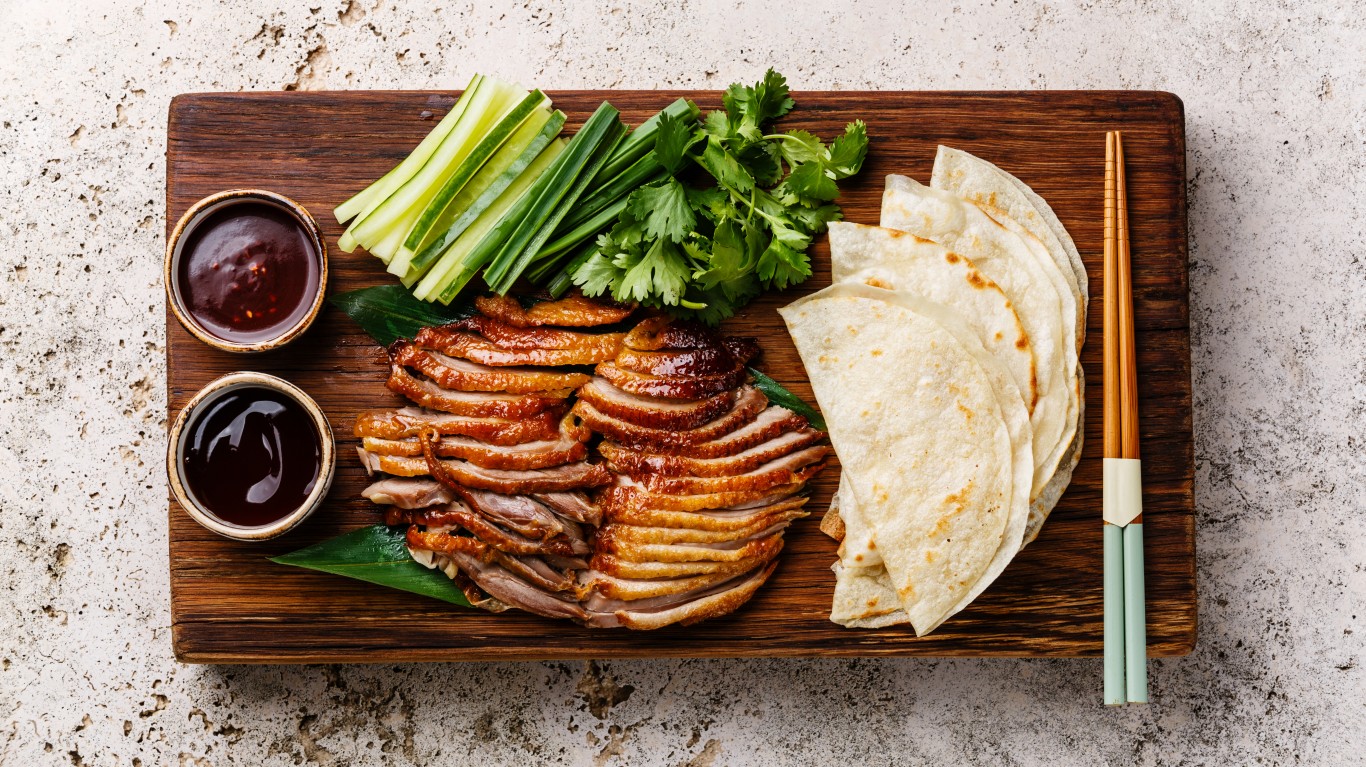
25. Peking duck
A precursor of this famous Chinese banquet specialty was made as early as the fifth century A.D., but the dish in something like its current form — with the duck coated in a sweet soy glaze, dried, and then roasted until its skin turns a crisp golden-brown — first appeared about a thousand years later. A restaurant in Peking (now Beijing) opened in 1416 was the first place to specialize in it, and is probably responsible for its name.
100 Million Americans Are Missing This Crucial Retirement Tool
The thought of burdening your family with a financial disaster is most Americans’ nightmare. However, recent studies show that over 100 million Americans still don’t have proper life insurance in the event they pass away.
Life insurance can bring peace of mind – ensuring your loved ones are safeguarded against unforeseen expenses and debts. With premiums often lower than expected and a variety of plans tailored to different life stages and health conditions, securing a policy is more accessible than ever.
A quick, no-obligation quote can provide valuable insight into what’s available and what might best suit your family’s needs. Life insurance is a simple step you can take today to help secure peace of mind for your loved ones tomorrow.
Click here to learn how to get a quote in just a few minutes.
Thank you for reading! Have some feedback for us?
Contact the 24/7 Wall St. editorial team.
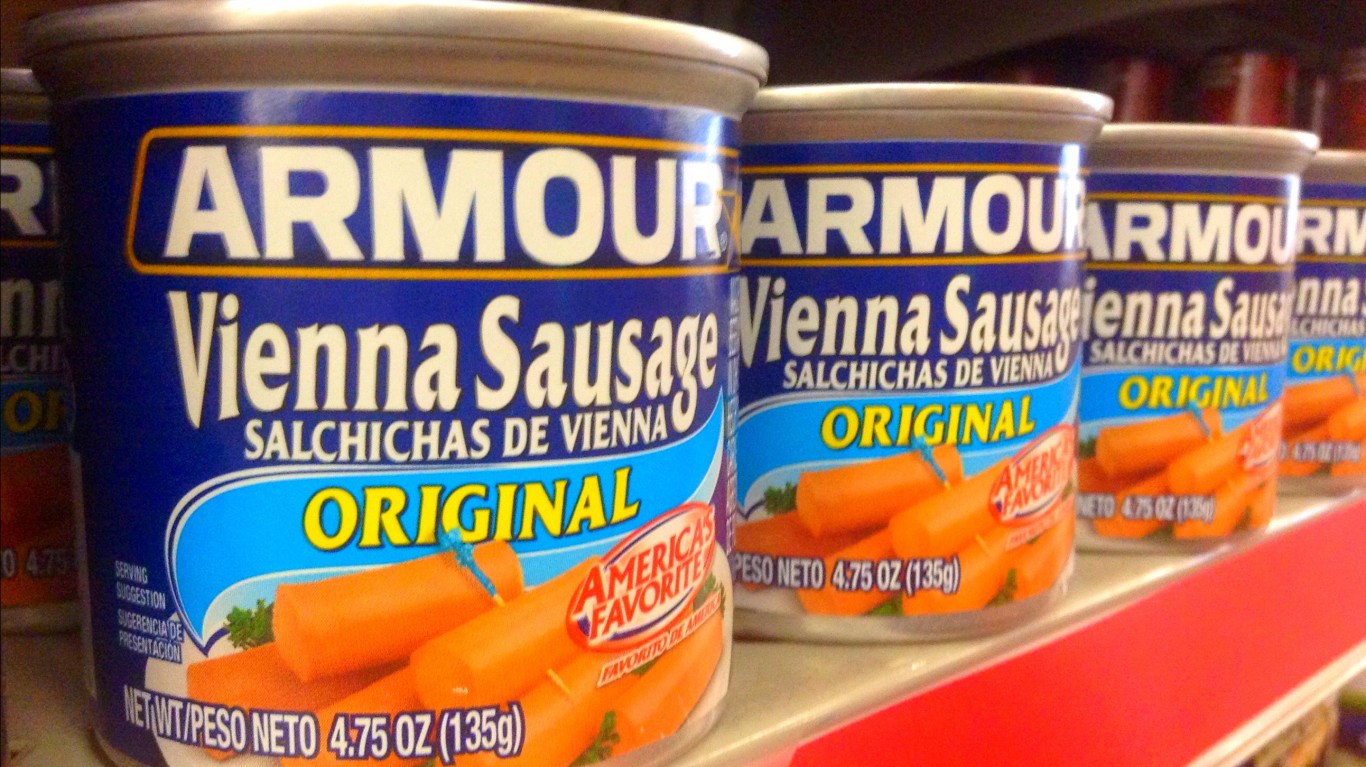
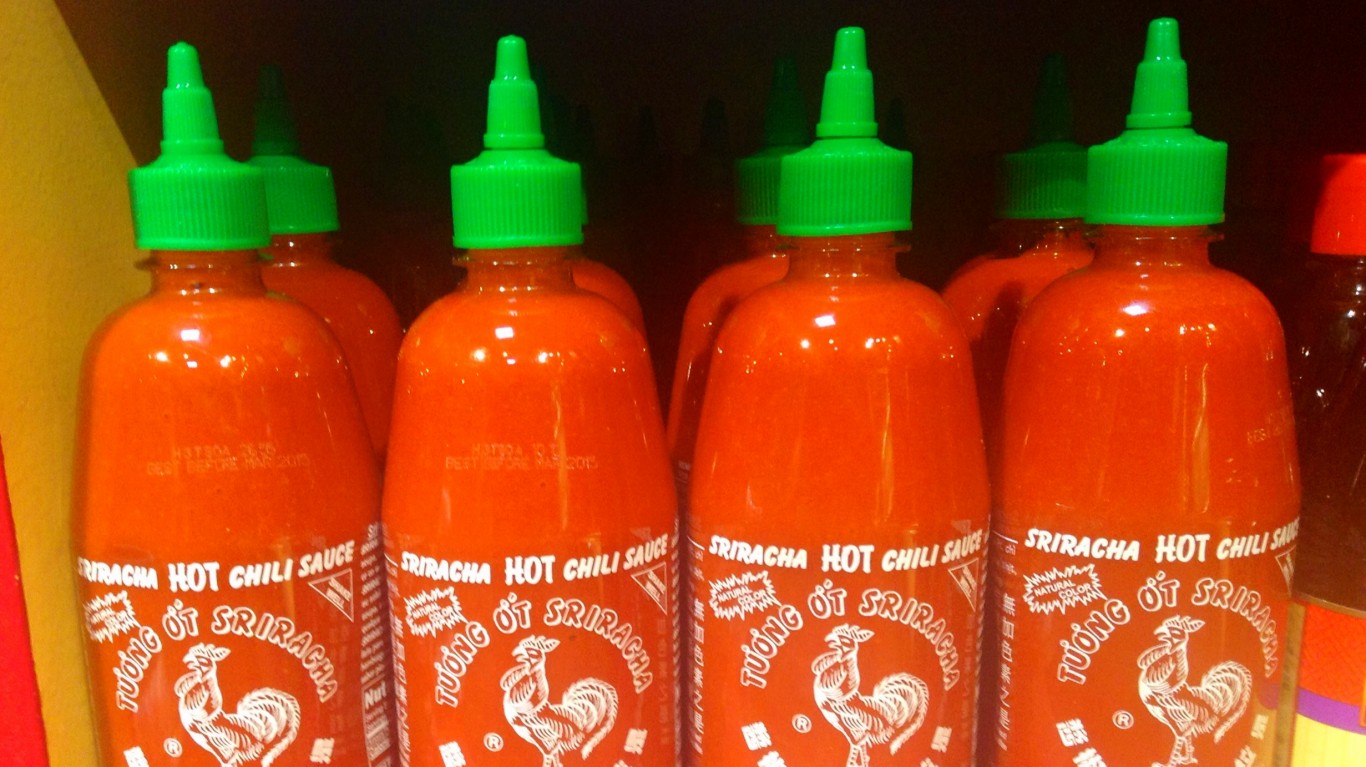
 24/7 Wall St.
24/7 Wall St.


